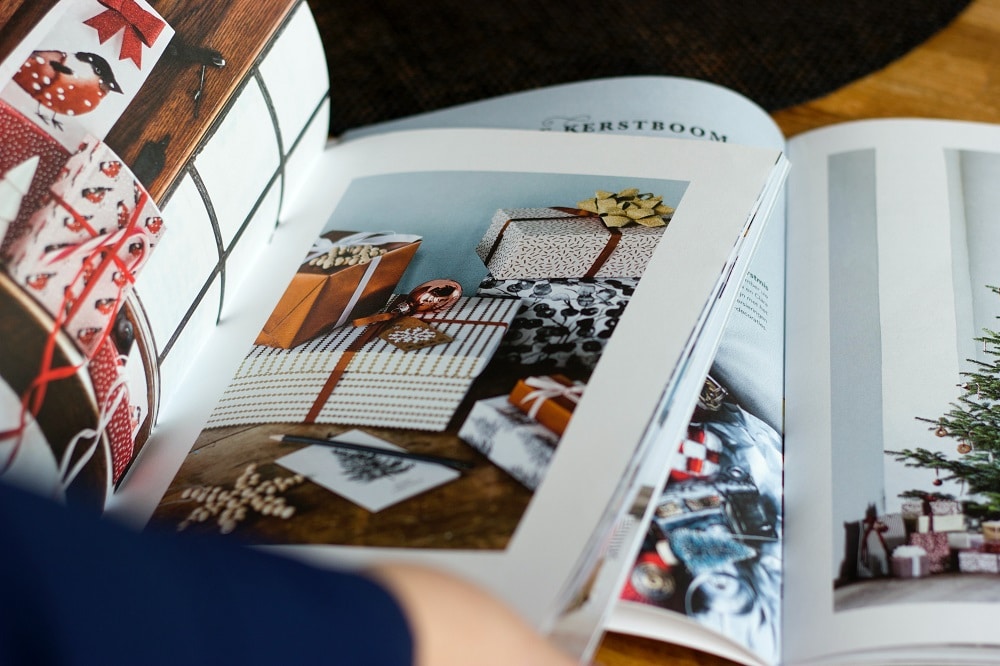Many years ago in order to stand out from competing catalogs, Sears simply printed theirs on smaller paper so when a stack of catalogs were delivered, theirs would always be on top. Very smart move for them right? There’s something to learn from this when marketing your products generally. Trying to fit in may not work and so when it comes to designing a catalog, take a different approach. It’s ok to learn from other brands but have some elements where you create your own narrative and path through design. Print catalog at 4OVER4 is the best place to start if you want to stand out from the crowd.
Find a template that reflects your brand’s personality
To best understand how to reflect your brand personality, think of your brand as a person. How would you speak, how would you behave in certain situations or how would you dress? This is what will inform the template you choose for your booklet or catalog. By doing this you will establish an emotional connection with like minded people who look for more than just tangible offerings before buying from a business. You will then establish more meaningful connections and avoid the trap of trying to be everything to everyone. According to Jennifer Aaker, a brand personality expert, your brand is likely to fall under these 5 personalities: sincerity, excitement, competence, sophistication and ruggedness. The 4OVER4 design tool makes designing a good booklet or catalog from scratch easy plus you could opt to use any of the hundreds of free templates that will express your brand’s true personality.
Settle on a size and shape
Remember the Sears example mentioned earlier where they made their catalogs smaller than their competition so that theirs would always be placed on top of the pile and hence get more attention? Well, start thinking outside the box because in the market today you can get a custom sized catalog design. This will probably cost more than a standard sized catalog but it will be a worthwhile investment. You could consider making booklets or catalogs in the shape of your products. For instance if you’re in the beauty industry, why not print booklets in the shape of your flagship product?
Organize your information
Make sure you organize your information properly. Avoid having unnecessary information because most people are only going to scan through the pages. Instead, put more focus on having interesting good quality photos. The best way to be effective in choosing the best layout for your information is to find product catalogs that you like and organize your information in a similar manner.
Once you’ve selected the correct images, check the resolution. Make sure images can be printed to avoid pixel prints. This can lower the quality level of your design. Check out color tones and color correction. If you get images with different tones, try adding visual processing such as overlays. This will give all images a uniform look.
Find the right typeface
This is about choosing the best font for your information. The key to picking a good typography font for a catalog is to find something that’s legible even at smaller sizes. One of the best font types that’s small and also looks good in small size is Helvetica. It’s quite popular especially with magazine publishers. If you lean more on projecting a corporate or luxurious style when designing a business booklet then this is a safe choice. You could also opt for Futura, one of the oldest fonts, or Verdana which is the Microsoft logo font type.
Add your logo
Your logo is closely related to your brand identity and should therefore feature prominently on your catalog or booklet. A quick glance at a familiar logo stirs up expectations and feelings about the brand, whether good or bad. This goes to show how crucial they are and if you’re planning to build a large brand that connects with people at an emotional level, then you’ve got to have the right mindset from the onset and include it in your catalog.
Include a call to action
Did you know that in the past when toilet paper was not widely available, people used Sears catalogs for toilet paper? Having a call to action during those times must have been a dicey affair because of their toiletry needs but today, your call to action has to be good enough to get people visiting your store, emailing you, calling you or whatever action you want them to take. Make sure it’s clear because while your catalog pages will not be used for toilet paper, they may end up being left on the ‘forgotten magazines pile’ or even worse, in the trash. Include discount codes, coupons that can be redeemed on your site so that you can measure the impact of your catalogs and get a return on your investment. Have you come across any outstanding catalogs to date, what made them catch your attention?


